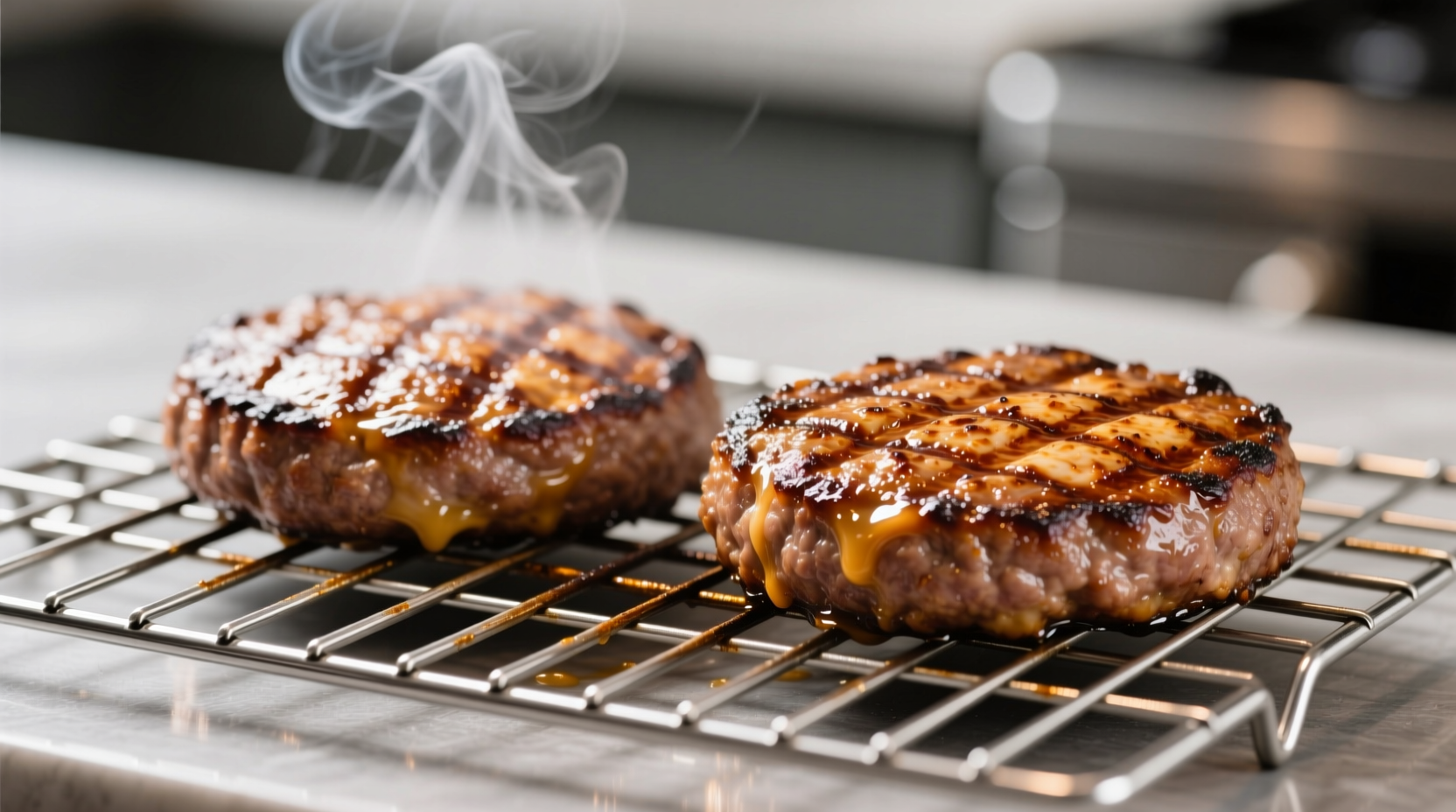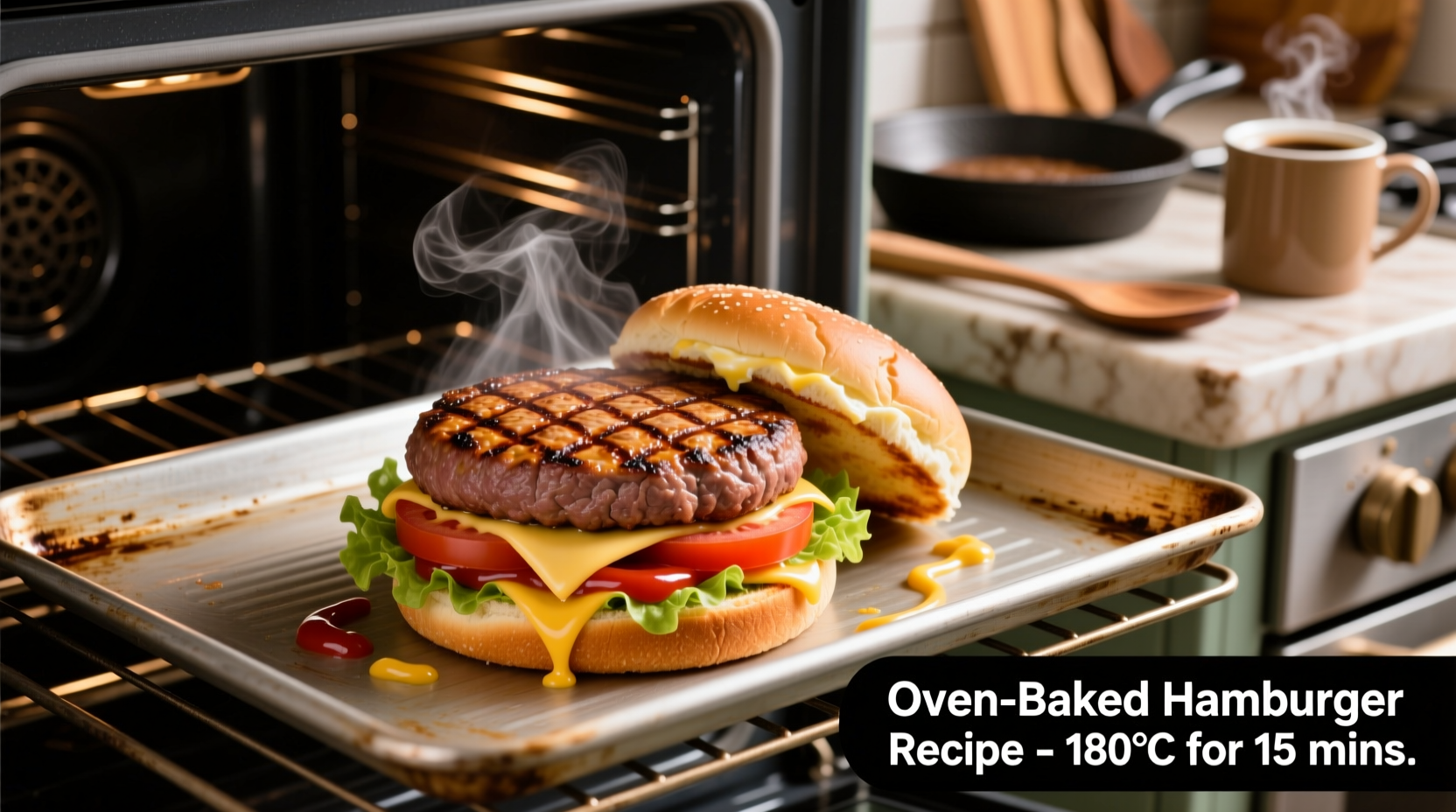Preheat your oven to 400°F (204°C), shape 80/20 ground beef patties with a slight dimple in the center, place on a wire rack over a baking sheet, and bake for 15-20 minutes until internal temperature reaches 160°F (71°C) for perfectly juicy hamburgers every time.
Craving restaurant-quality hamburgers without firing up the grill? Baking hamburgers in the oven delivers consistent, mess-free results with minimal supervision. Unlike stovetop cooking that requires constant attention, the oven method ensures even cooking while freeing you to prepare sides and toppings. This guide reveals the precise technique professional chefs use for perfectly cooked hamburgers with a flavorful crust and juicy interior—no flipping required.
Why Choose Oven Method Over Other Cooking Techniques
While grilling creates that classic char, oven baking offers distinct advantages for weeknight cooking. The controlled environment eliminates flare-ups that cause uneven cooking and charring. According to the USDA Food Safety and Inspection Service, oven cooking provides more consistent temperature control, reducing the risk of undercooked centers or overcooked exteriors common with pan-frying.
| Cooking Method | Hands-On Time | Consistency | Best For |
|---|---|---|---|
| Oven Baking | 5 minutes | Excellent | Weeknight meals, multiple patties |
| Grilling | 15+ minutes | Variable | Outdoor entertaining, smoky flavor |
| Stovetop | 10-12 minutes | Fair | Quick single servings |
Essential Equipment Checklist
You don't need specialty tools for perfect oven-baked hamburgers. Gather these kitchen staples before starting:
- Baking sheet with wire rack (critical for air circulation)
- Instant-read thermometer (non-negotiable for food safety)
- Mixing bowl for seasoning
- Cookie scoop or measuring cup for portioning
- Offset spatula for gentle handling
Step-by-Step Oven Hamburger Preparation
1. Selecting and Handling Ground Beef
Choose 80/20 ground chuck for optimal fat content—this ratio delivers maximum juiciness without excessive shrinkage. Handle the meat minimally to prevent toughening; cold hands work best. Form patties 3/4-inch thick with a slight dimple in the center to prevent bulging during cooking. The National Center for Home Food Preservation emphasizes keeping meat refrigerated until ready to cook and washing hands thoroughly after handling raw beef to prevent cross-contamination.
2. Preheating and Setup
Preheat oven to 400°F (204°C) with rack positioned in the center. Line a baking sheet with aluminum foil for easy cleanup, then place a wire rack on top. The rack allows hot air to circulate completely around the patties, creating an even sear on all sides—this is the secret to achieving grill-like results indoors.
3. Seasoning and Placement
Season patties generously with kosher salt and freshly ground black pepper just before baking. Avoid pressing seasonings into the meat, which compacts the proteins. Place patties on the wire rack with at least 1 inch between them. For cheeseburgers, add cheese during the final 3 minutes of cooking.
4. Baking Time and Temperature Guide
Bake for 15-20 minutes depending on thickness and desired doneness. Use this reference chart for precise results:
| Thickness | Time (400°F) | Internal Temp | Doneness |
|---|---|---|---|
| 3/4 inch | 15-17 min | 160°F | Medium |
| 1 inch | 18-20 min | 160°F | Medium |
| 1 1/4 inch | 22-25 min | 160°F | Medium |
5. The Critical Resting Phase
Remove patties from oven when thermometer reads 155°F (68°C)—they'll continue cooking to the safe 160°F (71°C) during resting. Let hamburgers rest on a clean plate for 5 minutes before serving. This allows juices to redistribute throughout the patty, preventing a dry burger. Food science research from American Culinary Federation confirms that skipping this step causes up to 40% juice loss when cutting into the meat immediately.

Pro Tips for Restaurant-Quality Results
- Chill before cooking: Refrigerate shaped patties for 30 minutes to prevent spreading during baking
- Avoid pressing: Never press burgers with a spatula while cooking—this squeezes out precious juices
- Customize seasoning: Add Worcestershire sauce or smoked paprika to the meat mixture for extra depth
- Toast buns properly: Place buns cut-side down on the oven rack during the last 2 minutes of cooking
Common Mistakes to Avoid
Many home cooks sabotage their oven-baked hamburgers with these errors:
- Using lean ground beef (90/10 or higher) resulting in dry burgers
- Skipping the wire rack, causing steaming instead of searing
- Overhandling the meat, leading to tough texture
- Not using a thermometer, risking undercooked or overcooked results
Storage and Reheating Guidelines
Store cooked hamburgers in an airtight container in the refrigerator for up to 3 days. For best reheating results, wrap patties in foil with a teaspoon of beef broth and warm in a 325°F (163°C) oven for 8-10 minutes. Avoid microwaving, which creates rubbery texture. According to food safety experts at USDA Food Safety, never leave cooked hamburgers at room temperature for more than 2 hours.
Frequently Asked Questions
Can I cook frozen hamburgers directly in the oven?
Yes, but increase baking time by 5-8 minutes and check internal temperature carefully. Place frozen patties on the wire rack without thawing. The USDA recommends adding 1.5 times the normal cooking time for frozen ground beef products to ensure food safety.
Why do my oven-baked hamburgers shrink significantly?
Shrinkage occurs when patties lack the center dimple or when using lean meat with insufficient fat content. Create a slight indentation in the center before baking and choose 80/20 ground beef. Proper chilling before cooking also minimizes shrinkage by setting the protein structure.
How can I get more browning on oven-baked hamburgers?
For deeper browning, broil for the final 1-2 minutes of cooking. Position the oven rack 6 inches from the broiler element and watch carefully to prevent burning. Alternatively, brush patties with Worcestershire sauce before baking to enhance Maillard reaction.
Is it safe to cook hamburgers at lower temperatures for longer?
No, cooking ground beef below 325°F risks spending too much time in the food danger zone (40°F-140°F). The USDA requires ground beef to reach 160°F internally for safety. Lower temperatures increase bacterial growth risk without improving texture.











 浙公网安备
33010002000092号
浙公网安备
33010002000092号 浙B2-20120091-4
浙B2-20120091-4